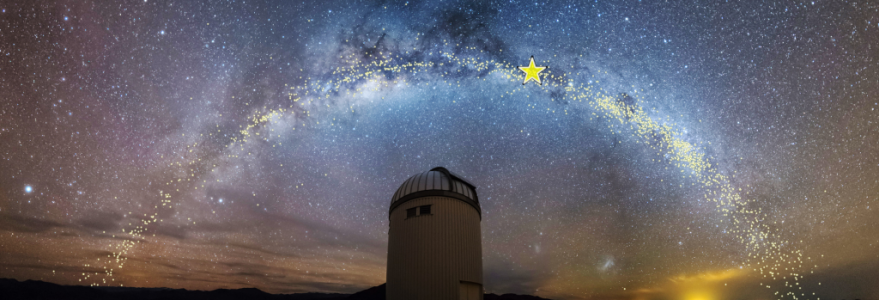The researchers from the Astronomical Observatory of the University of Warsaw discovered the classical Cepheid with the longest pulsation period known in our Galaxy. This variable star is called OGLE-GD-CEP-1884, and is likely the most luminous, youngest, and most massive Cepheid known in the Milky Way.
The newly discovered classical Cepheid in the Galaxy, named OGLE-GD-CEP-1884, can be categorised as the first ultra-long-period Cepheid in the Milky Way. The period of 78.14 days is nearly ten days longer than that of the previous record-holding Cepheid, S Vulpeculae. This star is present in the ASAS-SN and Gaia DR3 catalogs of variable stars, yet it has been classified as a long-period variable. Based on more than ten years of the photometric monitoring of this star conducted by the OGLE project in the I and V bands and a radial velocity curve from the Gaia Focused Product Release, the researchers unequivocally demonstrated that this object is a fundamental-mode classical Cepheid. By employing the mid-infrared period–luminosity relation, they managed to determine the distance to OGLE-GD-CEP-1884 (4.47 ± 0.34 kpc) and place it on the Milky Way map, along with about 2400 other classical Cepheids.
Although it was overlooked in the existing catalogs of Cepheids, the researchers point out that OGLE-GD-CEP-1884 is quite a bright star in the sky, especially at longer wavelengths. In addition, there might be more such long-period classical Cepheids in the Galaxy that remain undetected, and the Milky Way does not differ in the number of long-period Cepheids compared to other galaxies. The fact that this star was misclassified as an LPV in the ASAS-SN and Gaia catalogs indicates the need for continuous improvement of algorithms for the automated classification of variable stars. For now, traditional visual inspection of light curves remains the most reliable method for classifying variable stars.
3D map of the Milky Way
The OGLE research team, led by Prof. Andrzej Udalski, has been investigating the pulsating supergiant Cepheids for years. Thus, nearly half of the discovered classical Cepheids of the Milky Way has been discovered by the astronomers from the Astronomical Observatory of the University of Warsaw. In 2019, the researchers led by Prof. Dorota Skowron presented a unique three-dimensional map of the Milky Way, which provides insights into the structure and history of our Galaxy. The map demonstrates that the Milky Way disk is not flat, it is warped at distances greater than 25,000 light years from the Galactic centre. More about the 3D map can be found on the UW website >>
Publication details:
I. Soszyński, D. M. Skowron, A. Udalski, P. Pietrukowicz, M. Gromadzki, M. K. Szymański, J. Skowron, P. Mróz, R. Poleski, S. Kozłowski, P. Iwanek, M. Wrona, K. Ulaczyk, K. Rybicki, and M. Mróz, “Discovery of the Longest-period Classical Cepheid in the Milky Way”, The Astronomical Journal Letters, 965:L17 (2024): https://iopscience.iop.org/article/10.3847/2041-8213/ad392f





